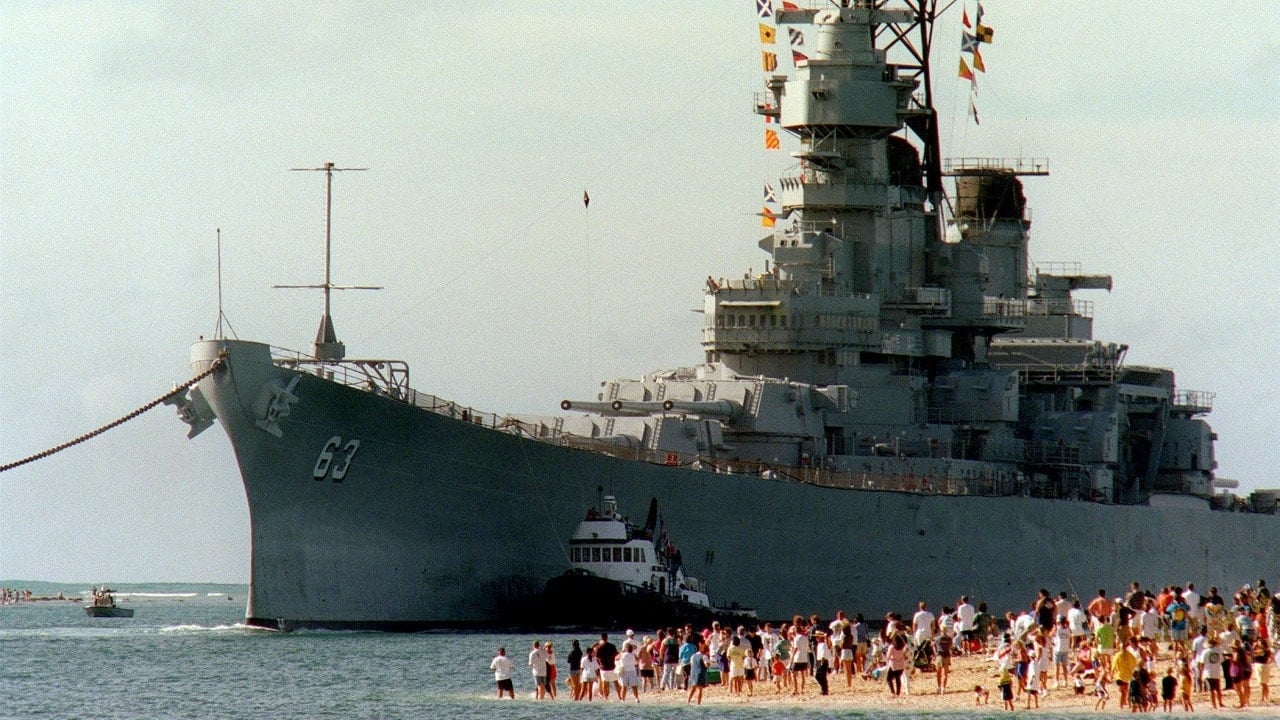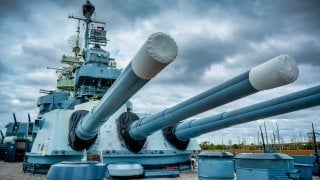Top 5 Battleships of All Time, According to a Navy War College Professor
Which battlewagon will rule the oceans?

Missouri remained a diplomatic emissary after World War II. The battlewagon cruised to Turkey in the early months after the war, as the Iron Curtain descended across Europe and communist insurgencies menaced Greece and Turkey. Observers interpreted the voyage as a token of President Harry Truman's, and America's, commitment to keeping the Soviet bloc from subverting friendly countries. Message: the United States was in Europe to stay. Missouri thus played a part in the development of containment strategy while easing anxieties about American abandonment. Naval diplomacy doesn't get much better than that.
Mikasa
Admiral Tōgō Heihachirō's flagship is an emblem for maritime command. The British-built Mikasa was arguably the finest battleship afloat during the fin de siècle years, striking the best balance among speed, protection, and armament. The human factor was strong as well. Imperial Japanese Navy seamen were known for their proficiency and élan, while Tōgō was renowned for combining shrewdness with derring-do. Mikasa was central to fleet actions in the Yellow Sea in 1904 and the Tsushima Strait in 1905 -- battles that left the wreckage of two Russian fleets strewn across the seafloor. The likes of Theodore Roosevelt and Alfred Thayer Mahan considered Tsushima a near-perfect fleet encounter.
Like the other battleships listed here, Mikasa molded how subsequent generations thought about diplomacy and warfare. IJN commanders of the interwar years planned to replicate Tsushima Strait should Japan fall out with the United States. More broadly, Mikasa and the rest of the IJN electrified peoples throughout Asia and beyond. Japan, that is, proved that Western imperial powers could be beaten in battle and ultimately expelled from lands they had subjugated. Figures ranging from Sun Yat-sen to Mohandas Gandhi to W. E. B. Du Bois paid homage to Tsushima, crediting Japan with firing their enthusiasm for overthrowing colonial rule.
Mikasa, then, was more than the victor in a sea fight of modest scope. And her reputation outlived her strange fate. The vessel returned home in triumph following the Russo-Japanese War, only to suffer a magazine explosion and sink. For the Japanese people, the disaster confirmed that they had gotten a raw deal at the Portsmouth Peace Conference. Nevertheless, it did little to dim foreign observers' enthusiasm for Japan's accomplishments.Mikasa remained a talisman.
Victory
Topping this list is the only battleship from the age of sail. HMS Victory was a formidable first-rate man-of-war, cannon bristling from its three gun decks. But her fame comes mainly from her association with Lord Horatio Nelson, whom Mahan styles "the embodiment of the sea power of Great Britain." In 1805 Nelson led his outnumbered fleet into combat against a combined Franco-Spanish fleet off Cape Trafalgar, near Gibraltar. Nelson and right-hand man Admiral Cuthbert Collingwood led columns of ships that punctured the enemy line of battle. The Royal Navy crushed its opponent in the ensuing melee, putting paid to Napoleon's dreams of invading the British Isles.
Felled on board his flagship that day, Nelson remains a synonym for decisive battle. Indeed, replicating Trafalgar became a Holy Grail for naval strategists across the globe. Permanently drydocked at Portsmouth, Victory is a shrine to Nelson and his exploits -- and the standard of excellence for seafarers everywhere. That entitles her to the laurels of history's greatest battleship.
Surveying this list of icons, two battleships made the cut because of defeats stemming from slipshod leadership, two for triumphs owing to good leadership, and one for becoming a diplomatic paragon. That's not a bad reminder that human virtues and frailties -- not wood, or metal, or shot -- are what make the difference in nautical enterprises.
About the Author
Dr. James Holmes holds the J. C. Wylie Chair of Maritime Strategy at the Naval War College and served on the faculty of the University of Georgia School of Public and International Affairs. A former U.S. Navy surface-warfare officer, he was the last gunnery officer in history to fire a battleship’s big guns in anger, during the first Gulf War in 1991. He earned the Naval War College Foundation Award in 1994, signifying the top graduate in his class. His books include Red Star over the Pacific, an Atlantic Monthly Best Book of 2010 and a fixture on the Navy Professional Reading List. General James Mattis deems him “troublesome.”
Editor's Note: This piece first appeared on December 26, 2013. It was recirculated due to reader interest.

